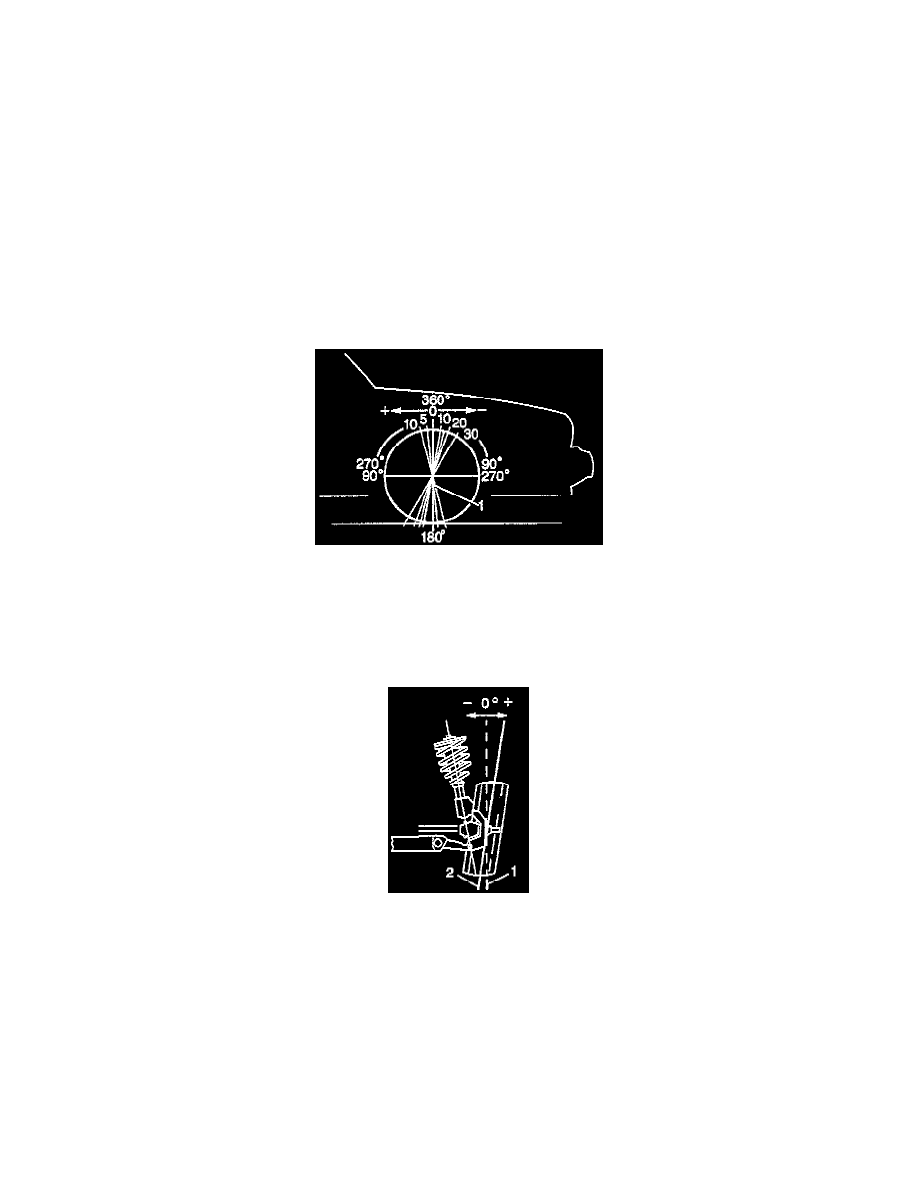Monte Carlo V6-3.8L VIN K (1998)

Alignment: Description and Operation
General Description
The wheel alignment refers to the angular relationship between the following components:
-
The wheels.
-
The suspension attaching parts.
-
The ground.
Important: Vibrations are rarely the result of improper alignment. Perform a complete wheel alignment check when a service check is necessary.
-
A complete wheel alignment check includes the measurement of all four wheels.
-
A geometrically aligned vehicle will improve the following conditions:
-
Increase fuel economy Increase tire life
-
Maximize steering
-
Maximize performance
Caster Description
Caster is the tilting of the uppermost point of the steering axis either forward or backward from the vertical (viewing from the side of the vehicle). A
backward tilt (at the top) is positive (+). A forward tilt (at the top) is negative (-). Caster influences the directional control of the steering. Caster does not
affect the tire wear. If one wheel has a more positive caster than the other, this condition will cause the vehicle to move or lead toward the side with the
least amount of positive caster.
Camber Description
Camber is the tilting of the wheels from the vertical when viewing from the front of the vehicle. When the wheels tilt outward at the top, the camber is
positive (+). When the wheels tilt inward, the camber is negative (-). The amount of tilt measured in degrees from the vertical is the camber angle.
Camber influences both directional control and tire wear. Excessive camber results in tire wear. Excessive camber causes the vehicle to pull or lead to
the side with the most positive camber. Camber adjustment is available at both the front and the rear wheels.
Toe Description
